One of the United State’s first landscape artists, Thomas Cole, can be considered as the father of the Hudson River School. Cole romanticized the wilderness of upstate New York. To him, wilderness and nature were meant to be admired and respected. It was never meant to be controlled, tamed, and made civilized.
This can be seen in Cole’s view of the United States in his group of paintings called “The Course of the Empire” which show five stages of landscapes that detail the fall and rise of 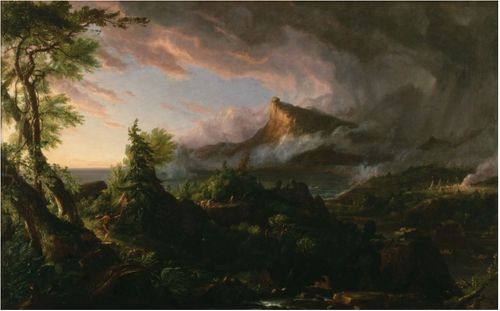
Thomas Cole
The Course of the Empire: The Savage State
Oil on canvas, 1834
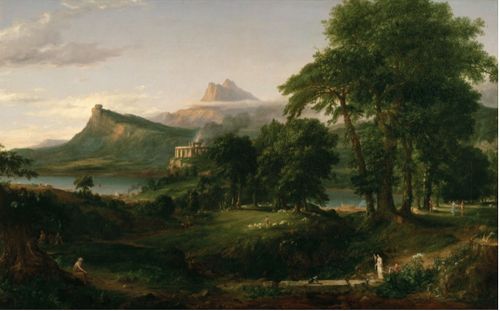
Thomas Cole
The Course of the Empire: The Pastoral State
Oil on canvas, 1834
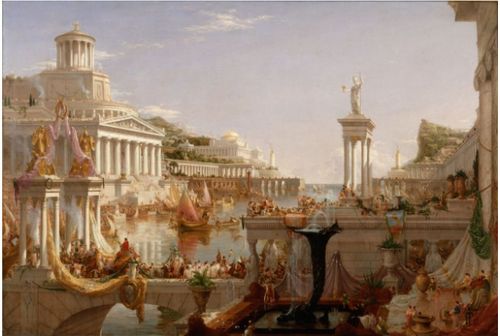
Thomas Cole
The Course of the Empire: Consummation of Empire
Oil on canvas, 1836
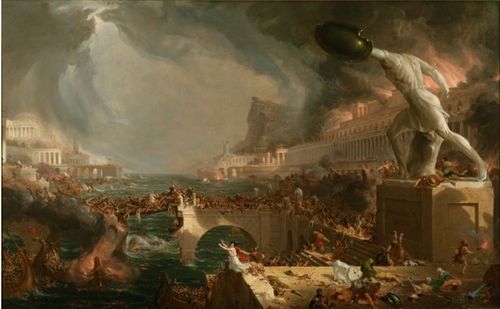
Thomas Cole
The Course of the Empire: Destruction
Oil on canvas, 1836
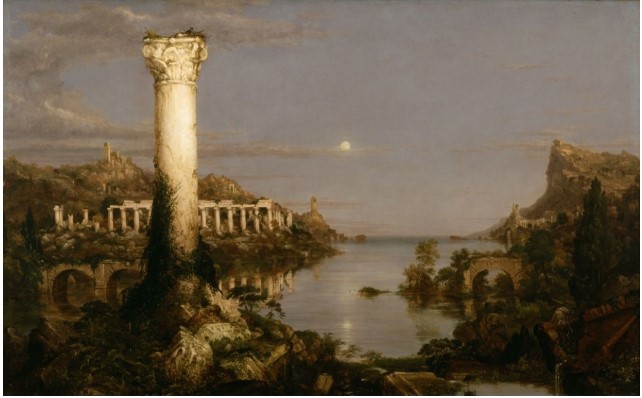 Thomas Cole
Thomas Cole
The Course of the Empire:
Oil on canvas, 1836
In 1825, Cole took trips to the Hudson Valley in New York State to paint the wilderness of the Catskill and the Adirondack mountains. There he found evidence of the country’s waterfalls, forests, and other scenery. Most of the pasture is based on what he saw there with a little inspiration from his home across the Atlantic Ocean as well. Since Cole was born in England, he was exposed to other parts of Europe as well. As a result, he was exposed to Western classics and Renaissance painting traditions in Italy. This can be seen through the ruins in the “The Consummation of the Empire” and “Destruction” paintings. Cole was extremely against the urban expansion by President Andrew Jackson and hence, painted his predictions for America as well as the world in general.
Cole painted real landscapes of the Hudson Valley in minute detail and could mimic the dramatic imagery using the effects of light and chiaroscuro. He often painted human figures but they were always hidden amongst the vast landscape. This was his way of conveying that nature was more powerful than man. He painted man and how the
Looking at Cole’s paintings from the perspective of a person living in 2019, we can see that